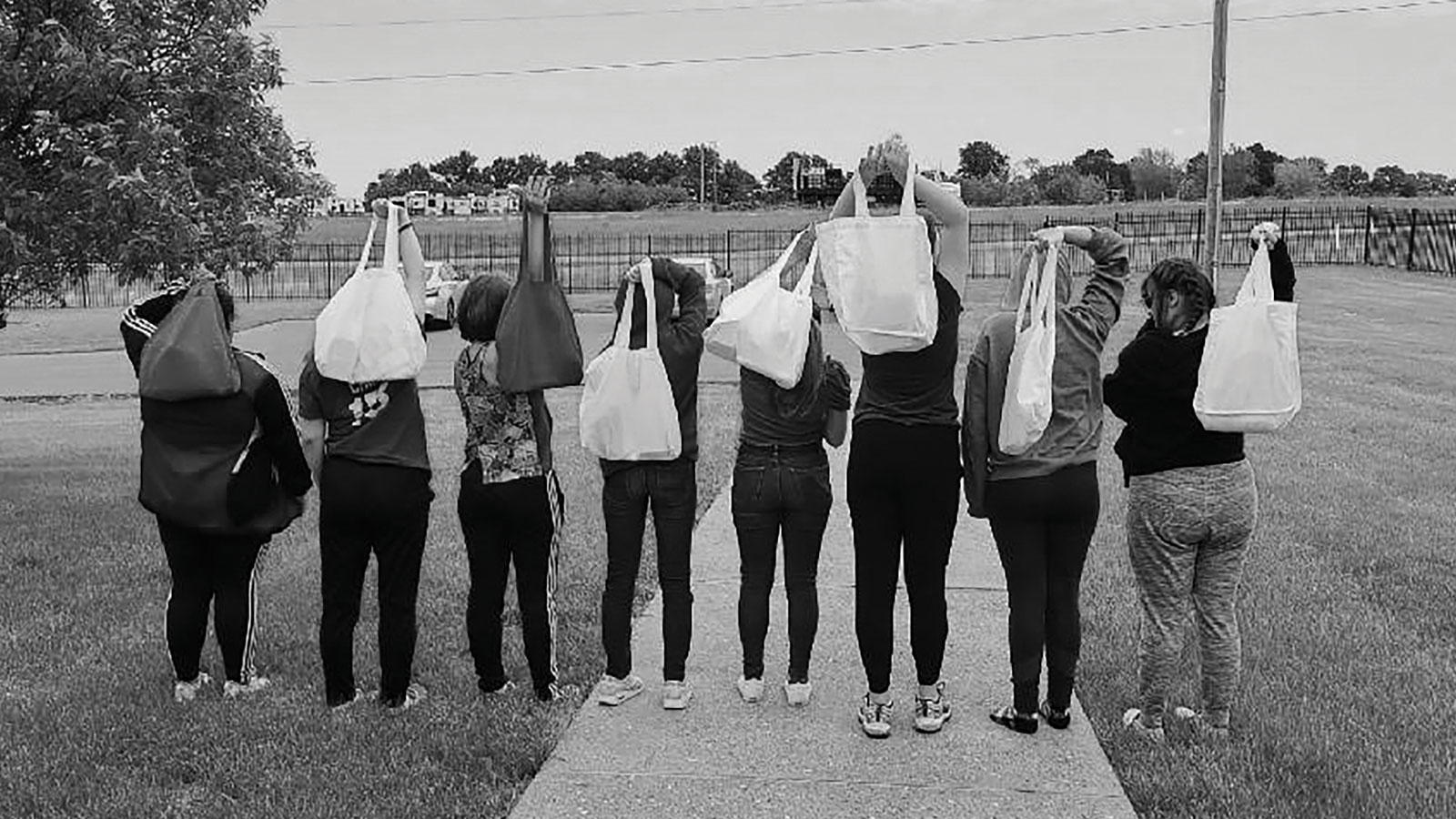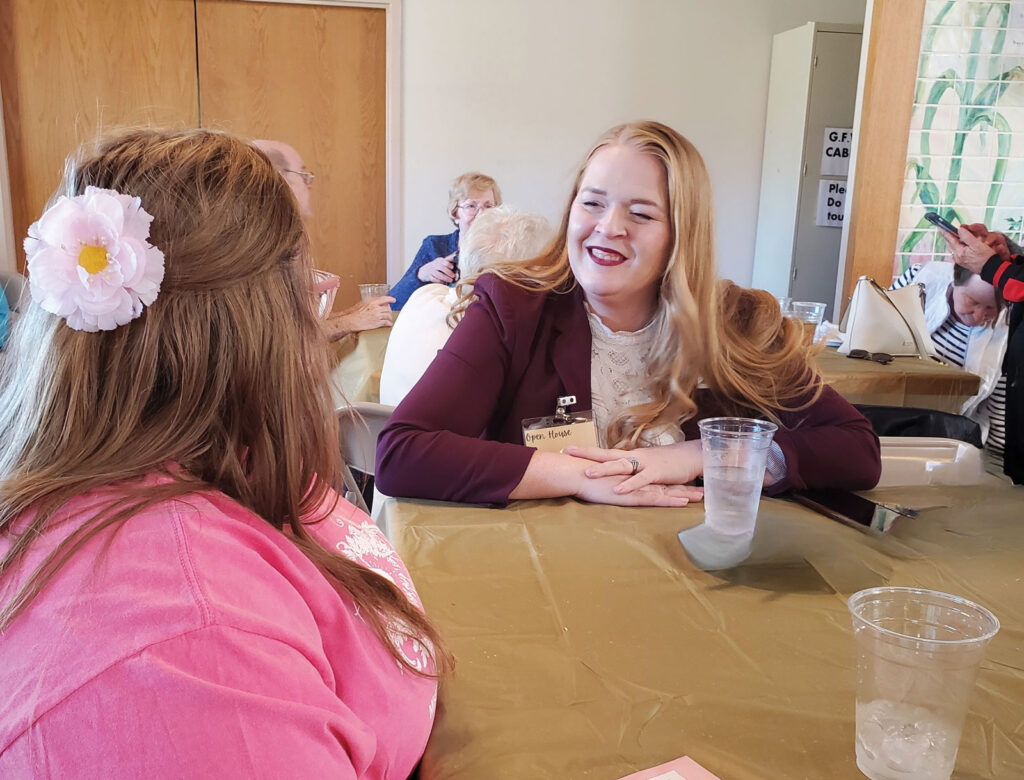Instilling Hope: Missouri Girls Town
- "Instilling Hope" originally appeared in the May 2024 "Weekender" issue of COMO Magazine.

In 1953, the Missouri chapter of the General Federation of Women’s Clubs recognized a need in the state. Missouri had homes for abused and neglected boys, but it did not have any residential facilities for girls in the same situation.
Fundraising began and six years later, Missouri Girls Town opened its doors. The home, located in Mountain Grove, Missouri, initially housed up to six residents.
Fast forward twenty-two years, and you’ll find Girls Town at its current location in Kingdom City thanks to a land donation from Bill and Peggy McClain of Wellsville, Missouri. With the additional twenty-three acres, Missouri Girls Town expanded and now has four residential cottages that can house up to fifty youths, along with administrative buildings, a rec center, a dining hall, and a school.
Individuals Served
The girls who grace the beautiful grounds of Missouri Girls Town range in age from eight to twenty-one with an average age of fourteen. By the time a young lady walks through its doors, she has typically lived in nine different placements — each one failing. The exception is found when a child is released from the hospital. In that situation, moving into Girls Town means the girl has progressed toward healing.
There is no way to paint a beautiful picture of the life these girls have had, and Girls Town isn’t a pie-in-the-sky, everything-is-coming-up-roses kind of place. It is not a place where girls pretend. The staff, therapists, and direct caregivers meet the residents in their reality — a reality of abuse, neglect, and trauma. Deanna Barger, director of development at Missouri Girls Town, says that the girls who enter the program “have suffered severe emotional, physical, and sexual abuse. Some of them have dealt with substance abuse issues. They’ve been through a lot.”
Girls enter the residential care program in several ways: by court order, private placement, or by referral from the Department of Social Services, Department of Mental Health, Division of Youth Services, or other state agencies. Some come to Girls Town when treatment in a psychiatric hospital is complete, but the youth still need care and are not ready to be placed back in foster care or with a family member.
During a resident’s time in the program, which can be anywhere from six months to one year, she will have weekly one-on-one sessions with her therapist and several weekly group sessions. She will stay in one of the cottages on campus along with other girls and a direct caregiver. An adult is in the house around the clock, every day of the year.
The girls attend school on campus through a partnership with the North Callaway School District. They have chores and organized recreation time. They also have their meals together. The goal is to surround the girls with a safe and supportive community to instill hope in them — hope for a better future.

In the Community
According to the Start Foster Care organization, Missouri ranks in the top ten for the highest number of children in foster care. Many of the girls coming into foster care have experienced trauma or the cycle of abuse. Girls Town exists to break that cycle in Missouri.
By giving the girls a safe place, an education, and a firm footing on the road to healing from their trauma, Girls Town gives them hope.
Barger says, “We are giving youth in Central Missouri a second chance at a brighter future. We speak to the generational impact [of abuse]. We contribute to Central Missouri by giving these youth life skills, so they can be productive members of the Central Missouri economy. They are our future workers. They’re our future voters.”
A win means being discharged to a lower level of care or receiving their high school diploma.
“That’s such a building block for the rest of their lives,” Barger adds, referring to a high school diploma. “It attests to the work that we’re doing with these kids. These girls walk into adulthood with hope that their future doesn’t have to look like their past.”
The Challenges
With such a goal before them — to change the trajectory of lives in their care — challenges abound. The first of Girls Town’s two highest priorities is staff. While that seems to be the cry across all sectors of business and society, Girls Town has experienced that shortage for about five years. The result is that while Girls Town can house fifty residents, it only has the staff to care for thirty-four. Barger explains, “It’s a pretty competitive job market.”
The cost of care for one resident is $315 per day. That calculates out to a little less than $115,000 per year for one child. Missouri provides 51 percent of the funding, leaving the organization to raise nearly half the income it needs to offer the quality of care it provides. Fundraising efforts are year-round and include soliciting individuals, corporations, and foundations. Missouri Girls Town relies on grants as well as income from annual fundraisers including “Happy Hour for Hope” held annually in September, a fall festival on the second Saturday of October, and a patron’s breakfast in the spring.
While many of the donors move into retirement and a less secure income Missouri Girls Town has hope that new donors will join the organization to support the work to break the cycle of abuse.
Missouri Girls Town Founded: 1959
Mission Statement: Supporting youth and families by providing therapeutic services and education to empower them to reach their full potential.
Board Officers:
Karen Blickenstaff, chairman
John Allen, first vice chairman
Danielle Easter, second vice chairman
Joe Scallorns, treasurer
Janet Guthrie, secretary
Board Members:
Linda Brace
Denise Chapel
Carl M. Edwards, Sr.
Dottie Getz
Annie Hiatt
Beverly Katz
Tamara Miller
Shane Stryker
Katie Shannon
Ex-Officio Members
Amy Boone, GFWC of MO president
Bonnie Tillman, GFWC of MO chairman
Directors
Jenny Preiss, executive director
Melissa Blumer, associate executive director
Missouri Girls Town
PO Box 59, Kingdom City, MO
573-642-5345
MissouriGirlsTown.org








